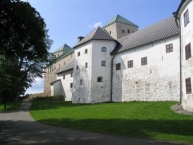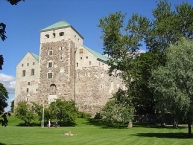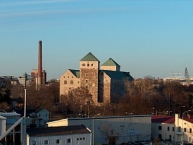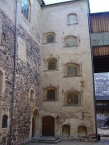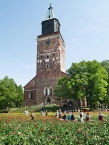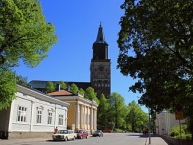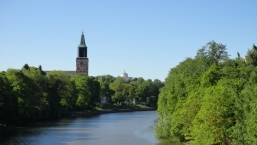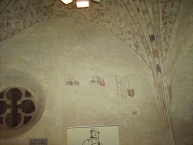Cycle Route Turku - Kuopio
No. of cycle route 9
Actions
![]()
Please wait - map data are loading
Added on 27 Dec 2011,
last edited by biroto-Redaktion on 03 Dec 2020
Actions
Cycle route metrics
Total distance in km
650
Information about rights to the gps-track data | |
|---|---|
Rights owner | OpenStreetMap and Contributors + biroto-Redaktion (biroto.eu) |
Rights characteristic / license | Contains information from OpenStreetMap, which is made available here under the Open Database License(ODbL) |
Link to the description of the license | |
GPX file taken from | |
GPX file uploaded | by biroto-Redaktion on 03 Dec 2020
|
Track points in total
9.517
Track points per km (avg)
15
Start/endpoint
Start location
Turku, Southern Finland, FI (10 m NHN)
End location
Kuopio, Eastern Finland, FI (89 m NHN)
Character
Die finnische nationale Route nr. 9 führt von der alten Hauptstadt Turku, oder Åbo, wie die Schweden sagen in nordöstliche Richtung bis nach Kuopio, Hauptort der Landschaft Nord Savo. Turku ist der der Landschaft Eigentliches Finnland (Varsinais Suomi). Hier stand die Wiege des Landes, das mit dem Erwachen der finnischen Sprache, die uralischen, also nicht indo-europäischen Ursrpungs ist, zu leben begann. Die ersten Jahrhunderte freilich noch als Teil des schwedischen Königreichs. Bis im 16. Jh. Helsinki gebaut und im 19. Jh. zur Hauptstadt gemacht wurde, war also Turku, wo diese Route loslegt, die Hauptstadt des ganzen Landes. Heute sind die Burg und der Dom, der nationale Heiligtum der Finnen, Ausdruck dieses Selbstbewusstseins. Vereint ist es in Mikael Agricola, der Reformator der Finnen, der in Turku Bischof war und von dem im Dom eine Statue steht. Er übersetzte die Bibel ins Finnische und gilt als der Vater der Sprache und des finnischen Selbstverständnisses. Nach dem Besuch dieser urfinnischen Sehenswürdigkeiten begeben wir uns auf dieser Route ins Landesinnere. Nach vielleicht zwei Etappen wird Tampere erreicht, die größte Stadt Skandinaviens, die nicht am Meer liegt. Hier enstand am Tammerkoski die finnische Industrie. Die alten Fabriken, wo vor allem Maschinen und Lokomotiven stehen heute noch und sind zu Museen geworden. Eines ist einem Lieblingssport der Finnen gewidmet, dem Eishockey. Gleich zwei Klubs aus Tampere spielen in der besten finnischen Liga, der SM-Liiga. Auf dem Friedhof von Kalevankangas ist der bekannte Rock-Musiker und Poet Juice Leskinen beerdigt. Eines seiner bekanntesten Lieder ist Valtatie yhdeksän, Reichsstraße neun. Es beschreibt den Weg zwischen seiner Geburtsstadt Juankoski (bei Kuopio) und der Stadt, wo er lebte und starb. Auch wir begeben uns nun auf den Weg nach Kuopio, freilich nicht auf der Reichsstraße, wo die Autos daherrasen, sondern auf der Fahrradroute, die sich in deren Nähe schlängelt. Hier beginnt das finnische Seenland, und die Route macht so einige Kurven um die Seen herum, aber wir haben ja Zeit. Auch zu einem erfrischenden Bad nach einer köstlichen finnischen Brotzeit, natürlich mit dem echt guten Roggenbrot, das in runden Scheiben verkauft wird. Eine Marke heißt Reissumies, was so viel wie Wandersmann bedeutet. So gestärkt begibt sich der Radwandersmann wieder auf die Route. Hoffentlich ist Sommer und der Tag somit sehr lang. Eigentlich wird es dann nie richtig dunkel, aber müde wird man ja trotzdem, und dann schlägt der naturliebende Radwanderer einfach sein Zelt irgendwo an einem See auf. Erlaubt ist das allemal, nur muss man den notwendigen Proviant natürlich schonn eingekauft haben. Vielleicht hat man auch Glück und wird von einem 'Eingeborenen' in die Sauna eingeladen und bekommt sogar ein Bett und ein Frühstück angeboten. In Finnland ist das durchaus möglich. Die Leute sind sehr gastfreundlich, und meinen, dass ein Mörder bestimmt nicht auf dem Fahrrad ankommen würde. Und öffnen ihre Häuser. Und ihre Herzen. Meins gehört ihnen schon lange. Nächste wichtige Stadt ist Jyväskylä, der Hauptort von Mittel-Finnland. Sie hat eine wichtige Universtät und viele Bauwerke des berühmten finnischen Architekten Alvar Aalto. Sein Stil erinnert ein wenig an Bauhaus aus Dessau und Weimar. Sehr funktionalistisch mutet er an. Weiter geht es durch das Seenland. Kaum einmal ein Kilometer ohne Blick auf einen, wie er im dichten Fichten- oder Birkenwald eingebettet liegt. Am Ufer oftmals ein paar Hütten, und ganz unten am See natürlich eine Sauna. Auf dem Weg nach Osten wird es allerdings immer einsamer und man hat die Natur meist ganz für sich allein. Da tut es gut, dass man sich wieder einer Stadt, dem Endpunkt der Route Kuopio nähert. Die Route 9 endet kurz vor der Stadt, wo sie auf die Route 5 trifft, der man die letzten Kilometer folgt. In Kuopio wird Wintersport groß geschrieben, was für die Finnen meist Skispringen und Langlaufen bedeutet. Auch Biathlon ist sehr populär, auch wenn die Finnen in dieser Sportart schon lange nicht mehr das Sagen haben. Komisch eigentlich, denn sie beinhaltet viel finnische Lebensart und Tradition. Mit Skifahren und Schießen hat man 1939 im Winterkrieg sogar dem mächtien sowtjetischen Heer das Fürchten gelehrt. Das ist alles lange her, aber im Wald stehen viele Monumente, die an die Kriegsschauplätze erinnern. Von Kuopio aus kommt man mit dem Zug schnell wieder nach Süden, nach Joensuu, Imatra und Helsinki.
Information about copyright | |
|---|---|
Rights characteristic / license | by-sa: CREATIVE COMMONS Attribution-ShareAlike |
Link to the description of the license | |
taken over / edited on | 16 Apr 2013
|
taken over / edited by |
|
Beds4Cyclists, worth visiting and infrastructure
Name and address
Latitude / Longitude
Phone
Fax
Mobile
Type of accommodation
Rating for cyclists
Route km
Dist. to route
Elevation
0 km
3,2 km
8 m
Information about copyright | |
|---|---|
Rights owner | w:User:Yumestarlet |
Rights characteristic / license | by-sa: CREATIVE COMMONS Attribution-ShareAlike |
Link to the description of the license | |
Image taken over from | |
Image has been uploaded | by Ottocolor on 15 Apr 2013
|
Information about copyright | |
|---|---|
Rights owner | erno. aus Turku, Finland |
Rights characteristic / license | by-sa: CREATIVE COMMONS Attribution-ShareAlike |
Link to the description of the license | |
Image taken over from | commons.wikimedia.org/wiki/File:Castle_of_Turku,_old_side.jpg |
Image has been uploaded | by Ottocolor on 15 Apr 2013
|
Information about copyright | |
|---|---|
Rights owner | Tapi0 |
Rights characteristic / license | by-sa: CREATIVE COMMONS Attribution-ShareAlike |
Link to the description of the license | |
Image taken over from | commons.wikimedia.org/wiki/File:Turun_linna_Turku_Finland.jpg |
Image has been uploaded | by Ottocolor on 15 Apr 2013
|
Information about copyright | |
|---|---|
Rights owner | Erno Miettinen from Turku, Finland |
Rights characteristic / license | by-sa: CREATIVE COMMONS Attribution-ShareAlike |
Link to the description of the license | |
Image taken over from | |
Image has been uploaded | by Ottocolor on 15 Apr 2013
|
Turku Castle (Finnish: Turun linna, Swedish: Åbo slott) is a medieval building in the city of Turku in Finland. Together with Turku Cathedral
, the castle is one of the oldest buildings still in use in Finland. Turku Castle is the largest surviving medieval building in Finland. It was founded in the late 13th century and stands on the banks of the Aura River
.
History
A start was made on building the castle in about 1280. The Swedish conquerors of Finland intended it originally as a military fortress . During the next two centuries its defences were strengthened and living quarters were added. The castle served as a bastion
and administrative centre in Eastland, as Finland was then known, during the Swedish period. The main part of the castle was extended considerably during the 16th century after Gustav Vasa
had ascended the Swedish throne and his son John
headed the Finnish administration following his promotion to duke. The bailey
was also supplemented and the round tower at the southeast corner of the bailey was added. Since then no part of the castle has been added or extended, only repaired.
The castle was ruled in different stages of its history by the castle sheriff, commander, regent, duke or governor-general. Its significance as a defensive fortress and administrative centre varied throughout the ages according to the political situation. Only once did the castle actually figure in the defence of the realm. This was when Russian invaders from Novgorod destroyed Turku in 1318. On the other hand, it frequently played a role in internal struggles for power within Sweden-Finland and the Kalmar Union
. Not until the end of 16th century did it really enjoy peace. The castle lost its status as an administrative centre in the 17th century after Per Brahe
's period as governor-general of Finland came to an end.
Construction
The layout of the castle consists of the Medieval keep (päälinna) and Renaissance bailey
(esilinna). The keep consists of a square fort with two square gateway towers whose wall thickness at the base is some 5 meters.
In the Middle Ages the castle was surrounded by a moat conjoining with the River Aura
, the castle effectively lying on an island. The keep was completed in the early 15th century. Construction of the bailey was begun in the late 15th century and finished in the 16th. The bailey is not as heavily fortified as the keep, but it has several turrets
. The Renaissance construction work included heavy modification of nearly all the rooms in the older medieval part of the castle. Since the Renaissance no additions have been made to the castle.
The modest military fortification grew into a massive greystone castle, whose solid walls have witnessed many milestones in Nordic history. The castle has been subject to numerous sieges
and several battles have been waged aside its walls. Of all Finnish castles, Turku castle has the most warlike history besides Vyborg castle
and Olavinlinna
.
Information about copyright | |
|---|---|
Rights characteristic / license | by-sa: CREATIVE COMMONS Attribution-ShareAlike |
Link to the description of the license | |
Input taken over from: |
Turku Castle. (2013, March 25). In Wikipedia, The Free Encyclopedia. Retrieved 17:41, April 15, 2013, from http://en.wikipedia.org/w/index.php?title=Turku_Castle&oldid=546966293 |
taken over / edited on | 15 Apr 2013
|
taken over / edited by |
|
Hours of opening
- Tue–Sun 10–18
- Mondays closed
Limited opening times 2013
- Thur 28 March 10–15
- Tue 30 April 10–15
- Thur 20 June 10–15
- Thur 5 December 10–15
The museum is closed
- 29 March – 1 April
- 1 May
- 9 May
- 21–23 June
- 6 December
- 24–25 December
- 31 December – 1 January
0 km
0,1 km
12 m
Information about copyright | |
|---|---|
Rights owner | Andrei Niemimäki from Turku, Finland |
Rights characteristic / license | by-sa: CREATIVE COMMONS Attribution-ShareAlike |
Link to the description of the license | |
Image taken over from | |
Image has been uploaded | by Ottocolor on 15 Apr 2013
|
Information about copyright | |
|---|---|
Rights owner | DreferComm |
Rights characteristic / license | by-sa: CREATIVE COMMONS Attribution-ShareAlike |
Link to the description of the license | |
Image taken over from | |
Image has been uploaded | by Ottocolor on 15 Apr 2013
|
Information about copyright | |
|---|---|
Rights owner | Mulberry24 |
Rights characteristic / license | by-sa: CREATIVE COMMONS Attribution-ShareAlike |
Link to the description of the license | |
Image taken over from | commons.wikimedia.org/wiki/File:Aura_River_and_Turku_Cathedral,_Turku_(20110603).jpg |
Image has been uploaded | by Ottocolor on 15 Apr 2013
|
Information about copyright | |
|---|---|
Rights owner | Harri Blomberg |
Rights characteristic / license | by-sa: CREATIVE COMMONS Attribution-ShareAlike |
Link to the description of the license | |
Image taken over from | commons.wikimedia.org/wiki/File:Helga_Korsets_kapell_i_Åbo_domkyrka,_den_27_juni_2007,_bild_5.jpg |
Image has been uploaded | by Ottocolor on 15 Apr 2013
|
Turku Cathedral (Finnish: Turun tuomiokirkko, Swedish: Åbo domkyrka) is the Mother Church of the Evangelical Lutheran Church of Finland
, and the country's national shrine
. It is the central church of the Archdiocese of Turku
and the seat of theArchbishop of Finland
, Kari Mäkinen
. It is also regarded as one of the major records of Finnish architectural history.
Considered to be the most important religious building in Finland, the cathedral has borne witness to many important events in the nation's history and has become one of the city's most recognizable symbols. The cathedral is situated in the heart ofTurku next to the Old Great Square
, by the river Aura
. Its presence extends beyond the local precinct by having the sound of its bells chiming at noon broadcast on national radio. It is also central to Finland's annual Christmas
celebrations.
The cathedral was originally built out of wood in the late 13th century, and was dedicated as the main cathedral of Finland in 1300, the seat of the bishop of Turku
. It was considerably expanded in the 14th and 15th centuries, mainly using stone as the construction material. The cathedral was badly damaged during the Great Fire of Turku
in 1827, and was rebuilt to a great extent afterwards.
As the town of Turku began to emerge in the course of the 13th century as the most important trading centre in Finland, the Bishop's see of the Diocese of Finland was transferred from its previous location at Koroinen , some distance further up on the bank of Aura river, to the middle of the town. By the end of the 13th century, a new stone church had been completed on the site of the former wooden-built parish church on Unikankare Mound, and it was consecrated in 1300 as the Cathedral Church of the Blessed Virgin Mary
and Saint Henry
, the first Bishop of Finland.
At its earliest the cathedral was smaller than the present building. Its east front was where the pulpit stands now, and its roof was considerably lower than at the moment. Extensions were made to the cathedral throughout the Middle Ages. During the 14th century a new choir was added, from which the octagonal Gothic pillars in the present chancel
originate. Throughout the Middle Ages, the High Altar
was located opposite the easternmost pillars of the nave
, until it was transferred to its present location in the apse
, in what had previously been the Chapel
of All Saints, in the mid-17th century.
During the 15th century, side-chapels were added along the north and south sides of the nave, containing altars dedicated to various saints. By the end of the Middle Ages these numbered 42 in total. The roof-vaults were also raised during the latter part of the 15th century to their present height of 24 meters. Thus, by the beginning of the Modern era , the church had approximately taken on its present shape. The major later addition to the cathedral is the tower, which has been rebuilt several times, as a result of repeated fires. The worst damage was caused by the Great Fire of Turku
in 1827, when most of the town was destroyed, along with the interior of both the tower and the nave and the old tower roof. The present spire of the tower, constructed after the great fire, reaches a height of 101 meters above sea level, and is visible over a considerable distance as the symbol of both the cathedral and the city of Turku itself.
Information about copyright | |
|---|---|
Rights characteristic / license | by-sa: CREATIVE COMMONS Attribution-ShareAlike |
Link to the description of the license | |
Input taken over from: |
Turku Cathedral. (2013, February 27). In Wikipedia, The Free Encyclopedia. Retrieved 19:31, April 15, 2013, from http://en.wikipedia.org/w/index.php?title=Turku_Cathedral&oldid=540951775 |
taken over / edited on | 15 Apr 2013
|
taken over / edited by |
|
Hours of opening
Daily 9 a.m. - 7 p.m.
(in the summer till 8 p.m.)
Please observe services and events.
203 km
1,1 km
84 m
430 km
0,2 km
72 m
430 km
3,2 km
127 m
![]()

